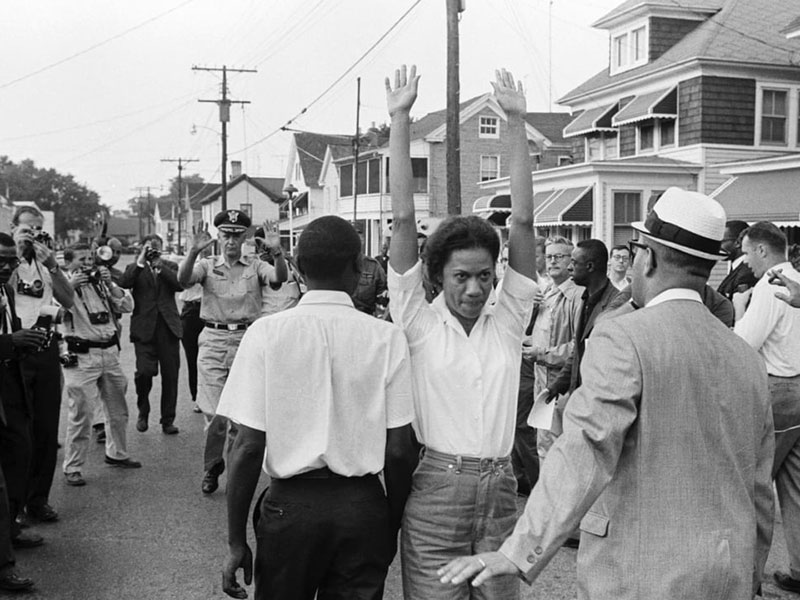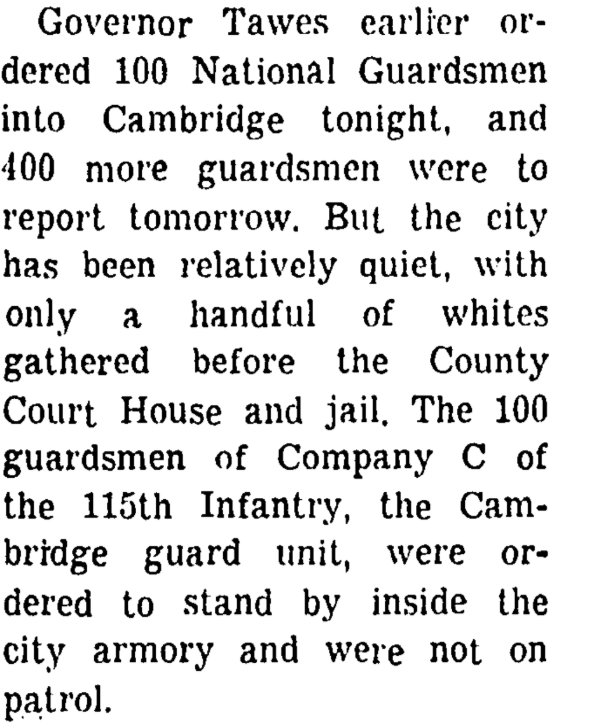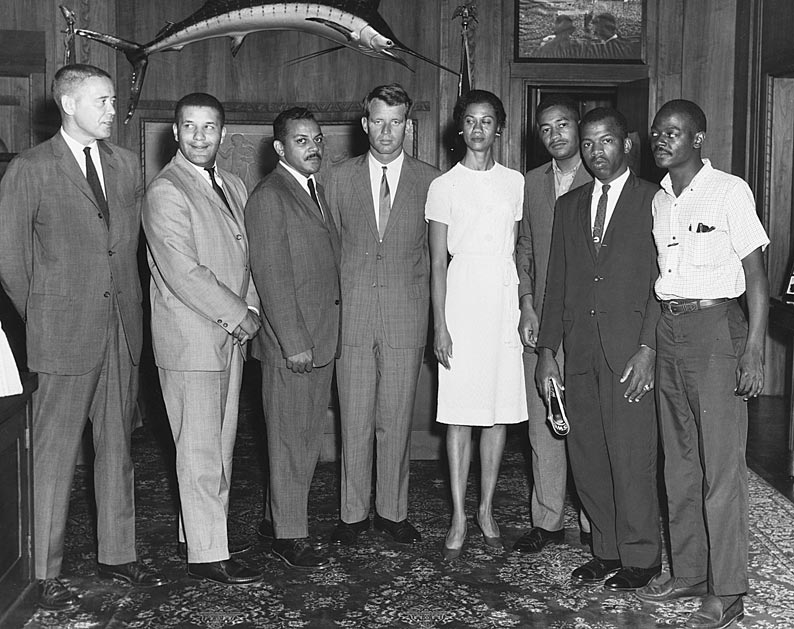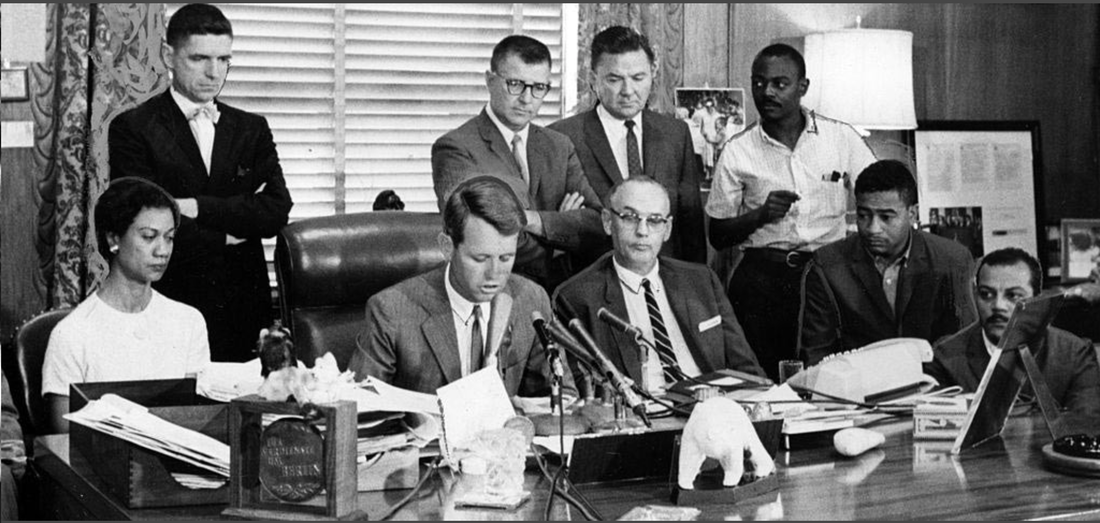In 1963, Gloria Richardson and CNAC led an uprising in Cambridge, Maryland. The uprising, which lasted 3 days, was born from the escalating tension between Cambridge’s black and white communities after discussions of economic and racial justice had dissolved.

Richardson and National Guard, Dorchester County, 1963
During the uprising, buildings were set on fire, windows were broken and there was heavy gunfire. Because of this violence, a curfew was put upon the citizens and the National Guard was called in to enforce a ban on those demonstrations. Finally, after weeks of intense violence, a Biracial Human Relations Commission was formed.


